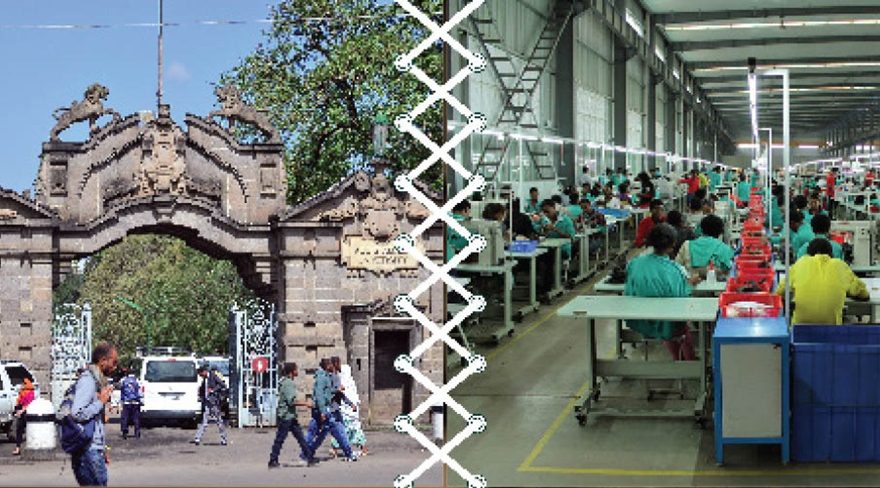
It is well recognized that universities’ teaching outcomes are significantly useful in improving economic performance as they could provide the nation with talented, knowledgeable, and expertise personnel.
Since innovation and economic development are pillars of industrial advancement and are two sides of a coin, Ethiopia needs to focus on universities to help every sector grow well.
Cognizant of this fact, The Ethiopian Herald had a stay with Amanuel Mosnie, an educationalist graduate from Addis Ababa University in Educational Planning and Management and attending his education in the same university in Economics, graduating class of course, to have a piece of information about the role of the universities for national growth and change.
He said, “Strengthening human resources, and science and technology capability, can potentially be the major pillars of real growth and development. The country has envisaged a key role for universities and industry in research and innovation, as a spur to increased competitiveness and economic growth. The role universities can play in economic development depends to a large extent upon the level of interaction that they have with industry and government.”
The concept of Triple Helix needs to be injected here to help universities, industry and government boost change via working together to promote innovations which can contribute to economic growth. Basically, the Triple Helix comprises three elements: A more prominent role for universities in innovation on a par with industry and government in a knowledge-based society, he added.
A movement towards collaborative relationships among the three institutional spheres is increasingly an outcome of interaction rather than a prescription from government, and Ethiopia does have the capacity to promote innovation if it is determined to develop industry university linkage of course.
As to Amanuel, despite some constraints, the university sector offers the greatest potential to initiate and lead firm partnerships. Universities are expected to take the lead and become the gravitational centers that initiate the partnership and they need to further differentiate their institutional mission towards high quality application oriented research for the most knowledge intensive industries. As a small number of established universities have both sufficiently qualified human resources and the desire to be research-active, all across the nation have to be given due emphasis to make them competent enough.
“Ideally each of the key economic corridors would have universities with relevant research capacity, at least in a limited range of fields critical to the region, professionally oriented institutions capable of offering industry-relevant education quickly, as well as teaching focused institutions capable of producing a pool of flexible human resource,” he opined.
As to him, universities and industries have, up to recent times, relatively separated and have been distinct institutional spheres. The role of government in relation to these two spheres is changing in apparently contradictory directions at present, if truth be told.
“True, the Ethiopian government is also shifting its relationships to economic institutions, becoming both much more involved in various activities to transform the economy of the country. The collaborative effort of universities with industry with a view to fostering knowledge transfer has progressively increased since recently, indeed!”
He said, “Many of the efforts exerted so far have been directed at industries or firms located at a distance from the university, and sometimes in a different country. Ethiopians have to well exploit the untapped opportunity and significance of industry-university linkage since the country is moving to embrace concepts of knowledge based economic development that brings the knowledge, productive and regulatory spheres of society into new configurations.”
Amanuel further stated that in the era of science and technology, Ethiopians peculiarly scientists and researchers have to take the lead to play the decisive role in pushing the country a number of steps forward using science and technology in this ever changing national, regional, continental and global environment with a special focus on the universities’ position in the newly emerging knowledge infrastructure and state-of-the art technological advancement.
“Universities are currently undertaking a technology revolution these days, incorporating economic and social development as part of their mission. This can be regarded as the first academic transformation made research an academic function apart from teaching. Now the emerging entrepreneurial university integrates economic development as an additional function, too. Besides, a complex web of relationships has grown up among academics, university originated start-ups and larger firms,” he underlined.
Innovation is a main driving factor for development and a crucial strategy for countries worldwide. Within the framework of an innovation-driven development strategy, industry-university-research collaborative innovation plays an important role. The effective development of universities promotes resource integration and close collaboration between enterprises, universities, research institutes, and other innovation subjects, facilitating coordinated development that has an important and far-reaching impact on regional economic growth and scientific and technological progress, he added.
Contemporary scientific and technological innovation has broken through the traditional linear model of the innovation value chain due to the increasing complexity and speed of technological innovation and the continuous development of the global economy. The process of knowledge flow is utilized to enhance industrial innovation performance by applying knowledge effectively to all aspects of industrial innovation activities. In so doing, it could really be possible to bolster economic growth via agglomerating university potentials for economic advancement.
Yes, he said the industry can provide scientific research funding support for universities and research institutes and offer research thinking and inspiration from the perspective of enterprises, which promotes the innovation.
He said, “A dynamic synergy between industries, universities, and research institutions promotes economic growth within regions and drives collective innovation. Obviously, the interdependence of government, business, and academia in fostering innovation and knowledge transfer has to be given due emphasis, in fact. The process of idea development, trial, and commercialization are dynamic and interactive, marking a shift from the conventional linear model of innovation. Spatial convergence refers to the process through which economic differences across regions become less over time, while temporal convergence is the result of growth trajectories synchronizing across various locations.”
The relationship of universities and government bodies fosters the creation of an innovation ecosystem, whereby the exchange of knowledge encourages entrepreneurial activities, improves competitiveness, and contributes to the economic growth of the area, as to Amanuel.
He said the importance of local knowledge networks and collaborative partnerships in fostering innovation and achieving economic prosperity needs to be well emphasized and given to wider place if the country is determined to record real growth.
The collaboration of three major subsystems: enterprises, universities, and scientific research institutions is of paramount importance in bolstering national growth. Moreover, the interaction between various entities cannot be separated but must have a close relationship, which can be examined from the perspective of knowledge interaction, such as technology market share, cooperative publications, and patent number, he opined.
Moreover, the population quality, industrial structure, and scale are expected to be made more reasonable in Ethiopia and the economic development level has to rank acceptably. The government attaches great importance to the deep integration of industry, universities, and scientific research to promote economic and social development, he underlined.
Due to past lagging economic, scientific, and educational development in the country the economic radiation effect has not been highly pronounced, indeed! The very advantages and lessons from experience need to be well exploited through the way of ‘learning by doing,’ as in so doing the coordinated development of national and regional production, education, and research can be highly promoted.
The government should formulate a flexible and unified regulation and guidance system, principles, strategic positioning, and development goals of the vocational education cluster in the country thereby meaningfully exploiting universities’ potentials for economic advancement and real change in all aspects.
As to him, such an intrepid move could promote the effective implementation of coordinated development measures such as cooperation between industries, universities, and scientific research institutions in running schools, resource sharing, teacher exchanges, and mutual recognition of tribute.
“Different vocational colleges in adjacent geographical areas require a gradual transition from point-to-point communication among colleges and/or universities to line-to-line connections among universities, vocational colleges and enterprises. Such a streamlined avenue forms a network distribution structure around national universities and industries to build a layout of colleges, universities and vocational colleges that empower the development of local industries,” he said.
As to Amanuel, concerning the indicators of industry, universities, scientific research, and industry-university-research coupled with firm coordination, the development level of the country is going to develop through its universities and their relentless effort to bring about momentous shift and concrete change.
He winded up his opinion saying the researches that would be conducted in the future need to incorporate a variety of academic viewpoints and investigate the intricate connections among universities, government and industries thereby coming up with economic growth in various geographical settings and across the nation in general.
BY MENGESHA AMARE
The Ethiopian Herald April 7/2024





